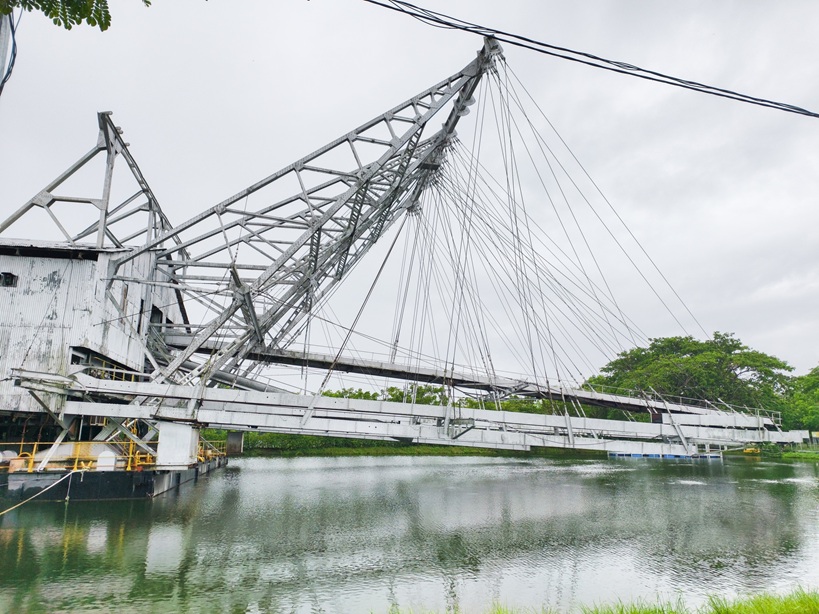
Photo Credit: Selangor Pewter FB
By Norhidayyu Zainal
BATU GAJAH, Nov 14: In Tanjung Tualang, once an active tin mining area in Perak, stands a towering four-storey giant — a tin dredge that reminds us of the state’s thriving tin industry then. Today, the massive structure remains an imposing reminder of a bygone era when the state reigned as one of the world’s top tin producers.
A recent visit to Tanjung Tualang Tin Dredge No. 5 (TT5), organised under Royal Selangor’s ‘Journey Across Time, Heritage and Artistry’ programme, this writer was transported into a world shaped by mud, metal and memories — a heritage landscape holding countless stories from a bygone mining boom.
Built in 1938 in England by Malayan Tin Dredging Ltd. and designed by F.W. Payne and Sons, TT5 is more than a relic of rusting steel. It is a testament to the engineering ambition and industrial progress that once fuelled Malaya’s economic rise.
Today, the 4,500-tonne dredge is maintained by Sim Leisure Sdn Bhd, with support from the Perak State Development Corporation (PKNP) and the state government. Their goal: to preserve the structure, revitalise it through tourism programmes, and ensure it remains a storied landmark for generations to come.
According to Sim Leisure’s Recreation Activity Officer Muhammad Muzaqeer Sulaiman, TT5 — often called The Last Dredge — is the only surviving tin dredge of its kind in Malaysia, making it an irreplaceable witness to the nation’s mining history.
“In its heyday, this dredge was like a floating factory. It scooped earth from the mining bed using a chain of giant iron buckets, then hauled the soil up for processing. The heavy tin ore would settle at the bottom, while sand and mud were discharged back into the pit,” Muhammad Muzaqeer explained.
After 44 years of operation, TT5 was shut down in 1982 following a plunge in global tin prices. For years, the 115-bucket dredge sat abandoned, slowly succumbing to weather, rust and erosion — until restoration efforts began in the early 2000s, spearheaded by both government and heritage bodies.
“The biggest challenge is the weather and corrosion. The entire structure is steel, and old metal deteriorates quickly if not properly cared for. Maintenance is costly because of the dredge’s sheer size, and many of its original components must be preserved with precision,” he said.
To ensure visitor safety, periodic structural maintenance is carried out, and all guests receive a briefing and are fitted with safety harnesses before stepping onto the dredge, he added.
Today, TT5 features safety platforms, guided pathways and amenities that allow visitors to explore the 15.24-metre-high, 75-metre-long and 35-metre-wide vessel with ease and confidence.
Besides guided tours inside the dredge, visitors can wander through a mini historical gallery showcasing mining tools and archival photographs, or unwind at the sprawling 55,000-square-foot Maze Park built as a leisure space.
“We organise heritage walks, photography sessions, community programmes and interactive educational tours for students. We also promote TT5 through social media and schools so that young Malaysians understand the mining history that once shaped our nation,” Muhammad Muzaqeer said.
TT5 is now part of the Kinta Valley UNESCO Global Geopark, an international recognition of Perak’s mining heritage and its unique geological landscape.
“We hope to transform TT5 into a modern interactive museum using technologies like augmented reality (AR) and virtual reality (VR). These features would offer a fresh experience while preserving the site’s historical value,” he added.
TT5 is open daily from 9 am to 6 pm. Admission is RM38 for adults and children, while entry is free for children under four and for persons with disabilities (OKU).
— BERNAMA